Conservation plans announced for Eames House
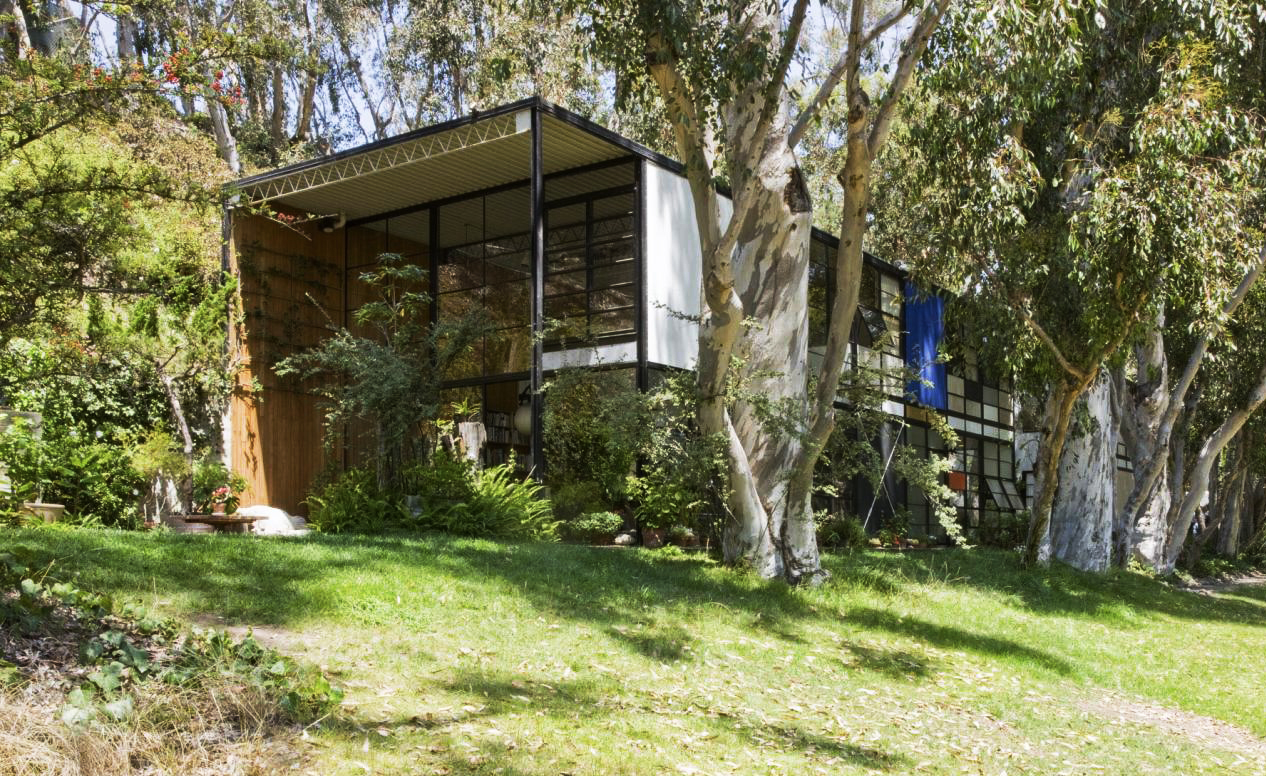
The Eames House has enjoyed celebrity from inception. Published even before it was built, it formed one of the famed Case Study houses that appeared in Art and Architecture Magazine from 1945. Now, announced at the 70th anniversary of the storied home’s construction, the Getty Conservation Management Plan, spearheaded by the Getty Conservation Institute and the Eames Foundation, aims to preserve the entire house and contents to celebrate the Eames' humanisation of industrial modernism.
The house's idea was born when Art and Architecture Magazine editor John Entrenza anticipated the post war boom in building and decided to bring affordable, practical architecture available to the audience of his magazine. Inviting acclaimed architects to create bespoke housing designs, the magazine effectively acted as the client; and so it began.
Five of the houses in the series were built in Pacific Palisades, in parcels of land owned by Entreknza, who sold the site for Case Study House 8 to Ray and Charles Eames – right next to his own house, Case Study 9, which was one of the few architectural projects that Charles worked on.
Entrenza and the Eames had become significantly intertwined after the couple had moved to California. In 1942 they joined forces to form the plyformed wood company, originally making splints for wounded soldiers. The technological and design experience from this would later inform the legendary furniture the team produced; while Charles worked extensively on the Art and Architecture magazine at the same time, as part of its editorial advisory board.

Contractors undertaking conservation treatment on the wood paneling in the Eames House living room in 2012. Courtesy of J. Paul Getty Trust
The final form of the Eames house was quite different to its very first concept, the ‘Bridge House', published in the magazine in 1945. Dominance of the landscape using pilotis, which would have given a sea view, was exchanged for a more harmonious relationship with the site. The new structure contained two blocks nestled into the landscape, surrounded by meadow and eucalyptus trees. The house and the landscape become almost seamless as light and shadow pass through the windows. This aspect of the house was thoughtfully accentuated by Ray’s careful planning of the garden, bringing cut flowers into the house, opening windows and curtains, creating an ever-changing and enchanting visual exchange with nature.
The Eames house became a site of pilgrimage when it was included in A Guide to Architecture in Los Angeles and Southern California, published in 1951 with a note that the owners will show their home. The names included on the list of visitors are impressive; they include Alison and Peter Smithson, Norman Foster and Richard Rogers, Kevin Roche and Earo Saarinen.
To this day, the Eames House is among one of the most widely recognised and internationally influential works of domestic architecture, which is why preserving it is imperative; and this is not just about the structure. The couple delighted in finding new harmonies between craft and machine, and over the years the house was filled with their collection of found and utilitarian objects, now considered to be as integral to the house, as the structure itself, helping to make the Eames house a real family home.

Ray and Charles Eames standing on the steel frame of their house in 1949. The honest expression of the steel components demonstrates the modernist enthusiasm for using prefabricated parts and industrial technology for postwar domestic architecture in the US.
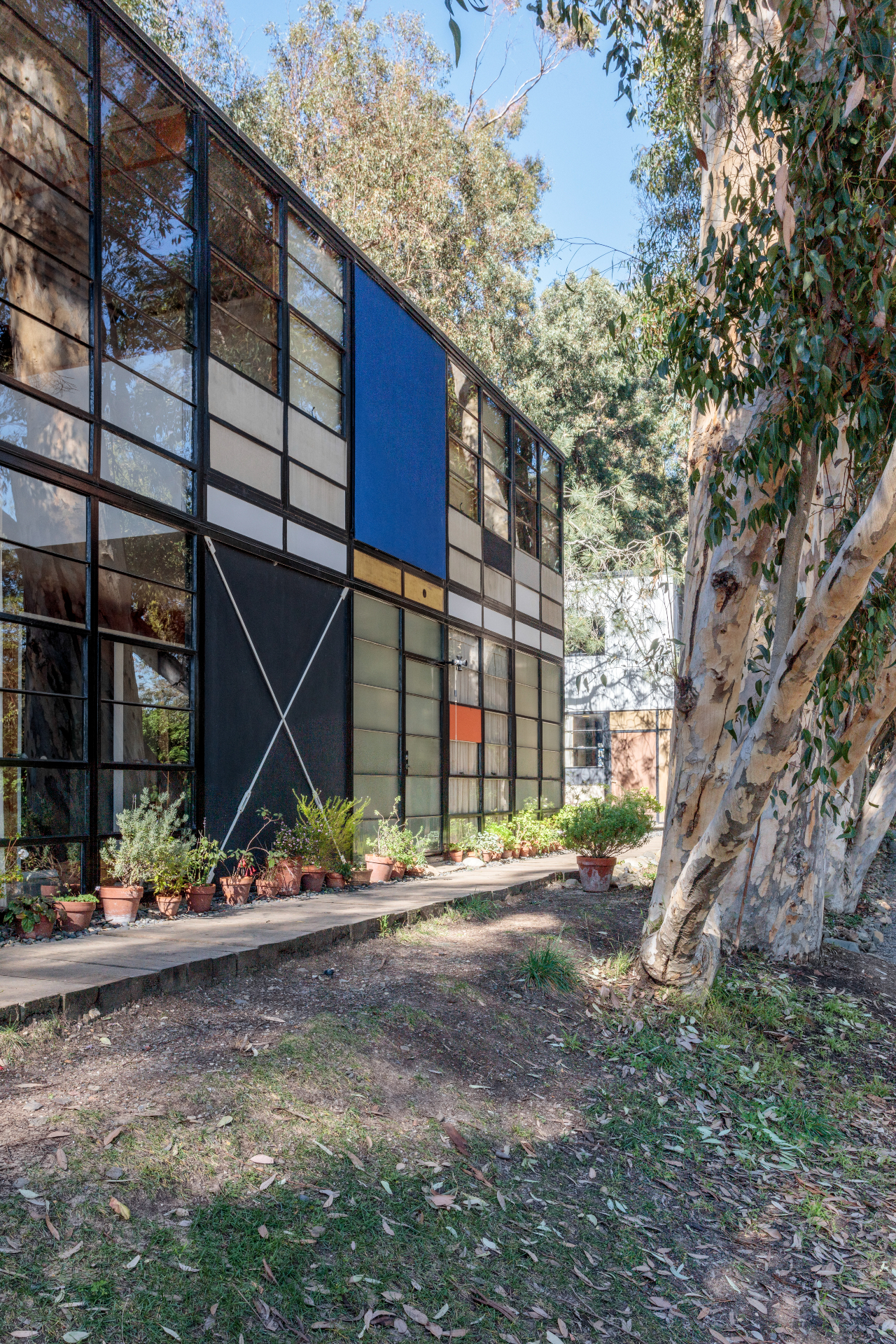
View of the east facade of the residence in 2017.courtesy of Eames Office

The south elevation of the studio, showing the Eames’ complex selection of exterior cladding and paving materials and plants.
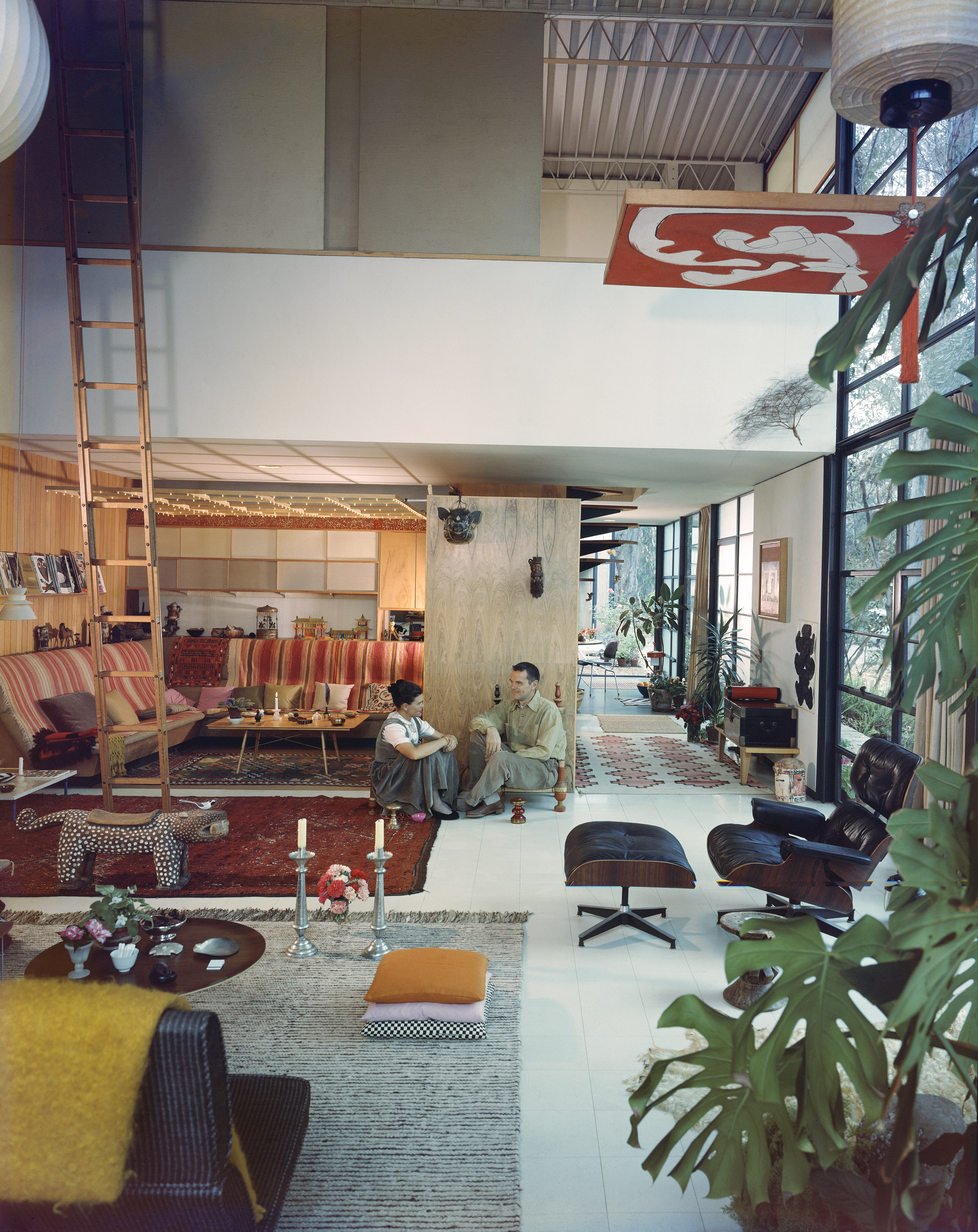
Ray and Charles Eames in the living room in 1958. During their years in the house, they filled the room with objects, textiles, and artwork. courtesy of J. Paul Getty Trust, Getty Research Institute, Los Angeles (2004.R.10)
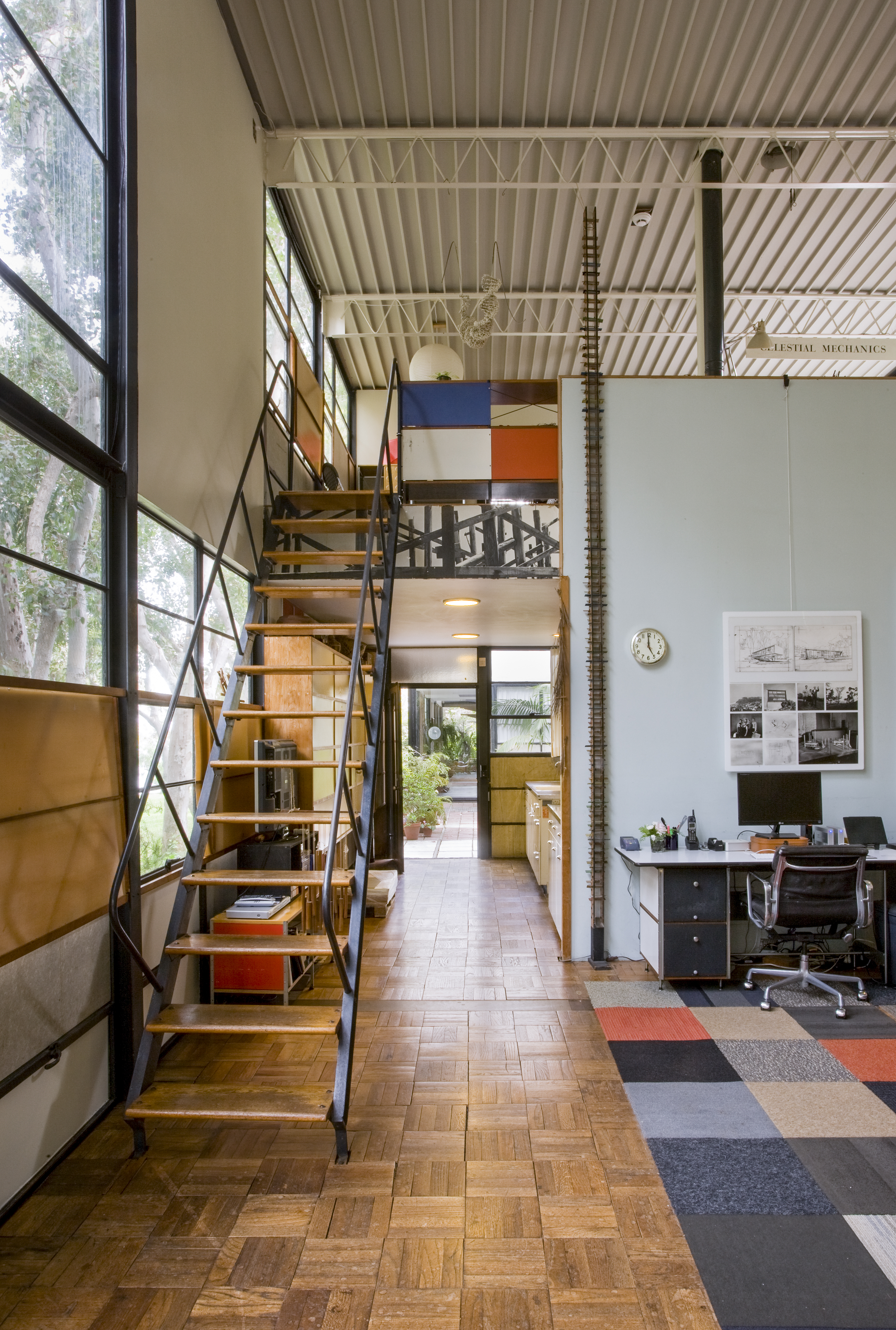
View of the studio, looking south in 2013. This provides an example of the Eames' flexibility of design. The double-height space, which maximizes natural daylight, proved to be very adaptable and has seen many changes in use over the years. courtesy of Eames Office
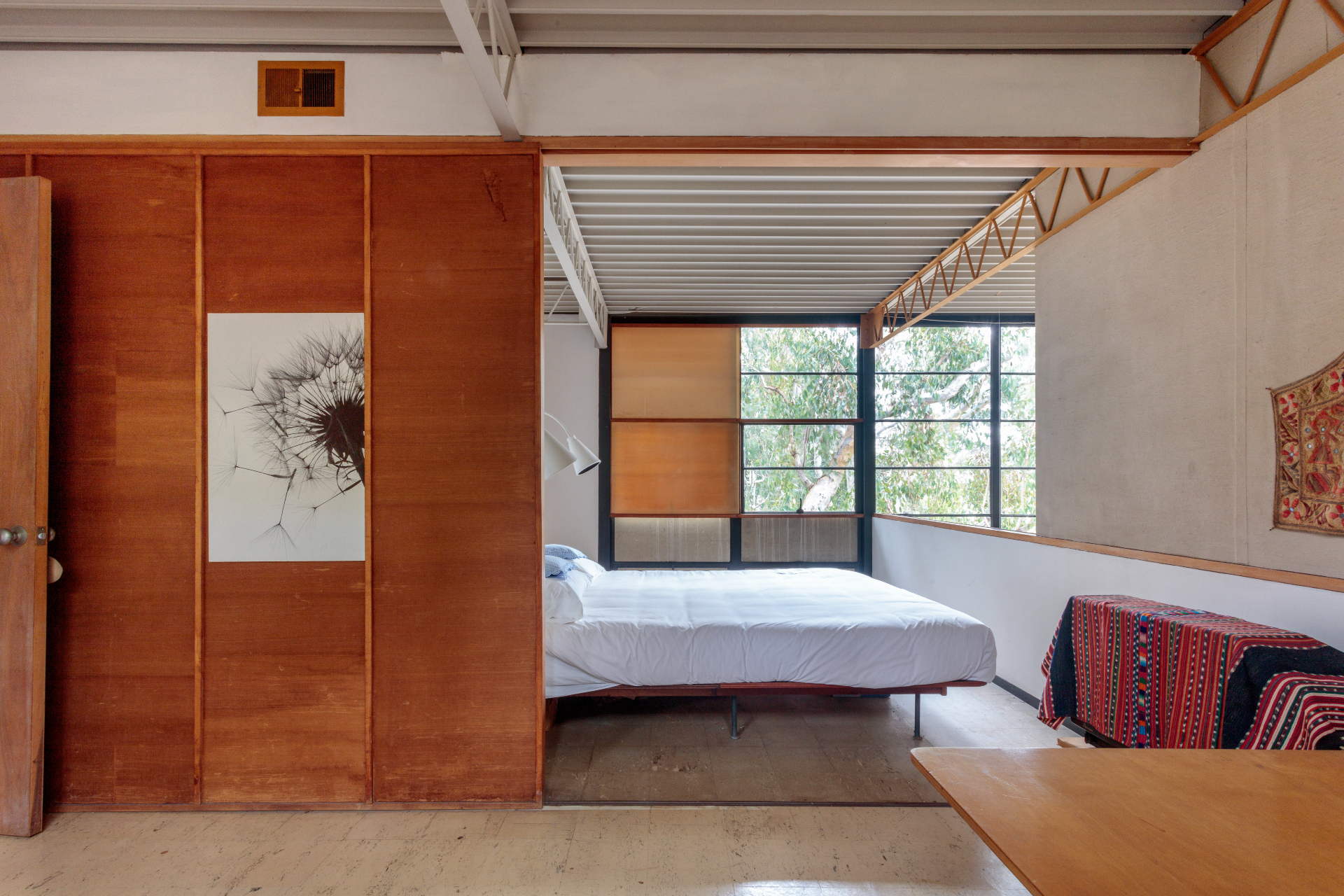
The master bedroom shows the house's maximization of spatial flexibility. When open, the sliding wood panel at left integrates the bedrooms into one large space. At right, sliding panels close off the bedroom from the living room below. courtesy of Eames Office

The residence's spiral staircase, as seen through the open front door, in 2014.courtesy of Eames Office
INFORMATION
For more information visit the Eames Foundation’s website
Receive our daily digest of inspiration, escapism and design stories from around the world direct to your inbox.
-
 Kohler unveils ‘Pearlized,’ an iridescent new finish with an under-the-sea backstory
Kohler unveils ‘Pearlized,’ an iridescent new finish with an under-the-sea backstoryArtist David Franklin was inspired by glimmering fish scales and sunsets for this mesmerising debut
-
 The Met reveals its 2026 Costume Institute show along with another major milestone
The Met reveals its 2026 Costume Institute show along with another major milestoneThe First Monday in May just became a much bigger deal...
-
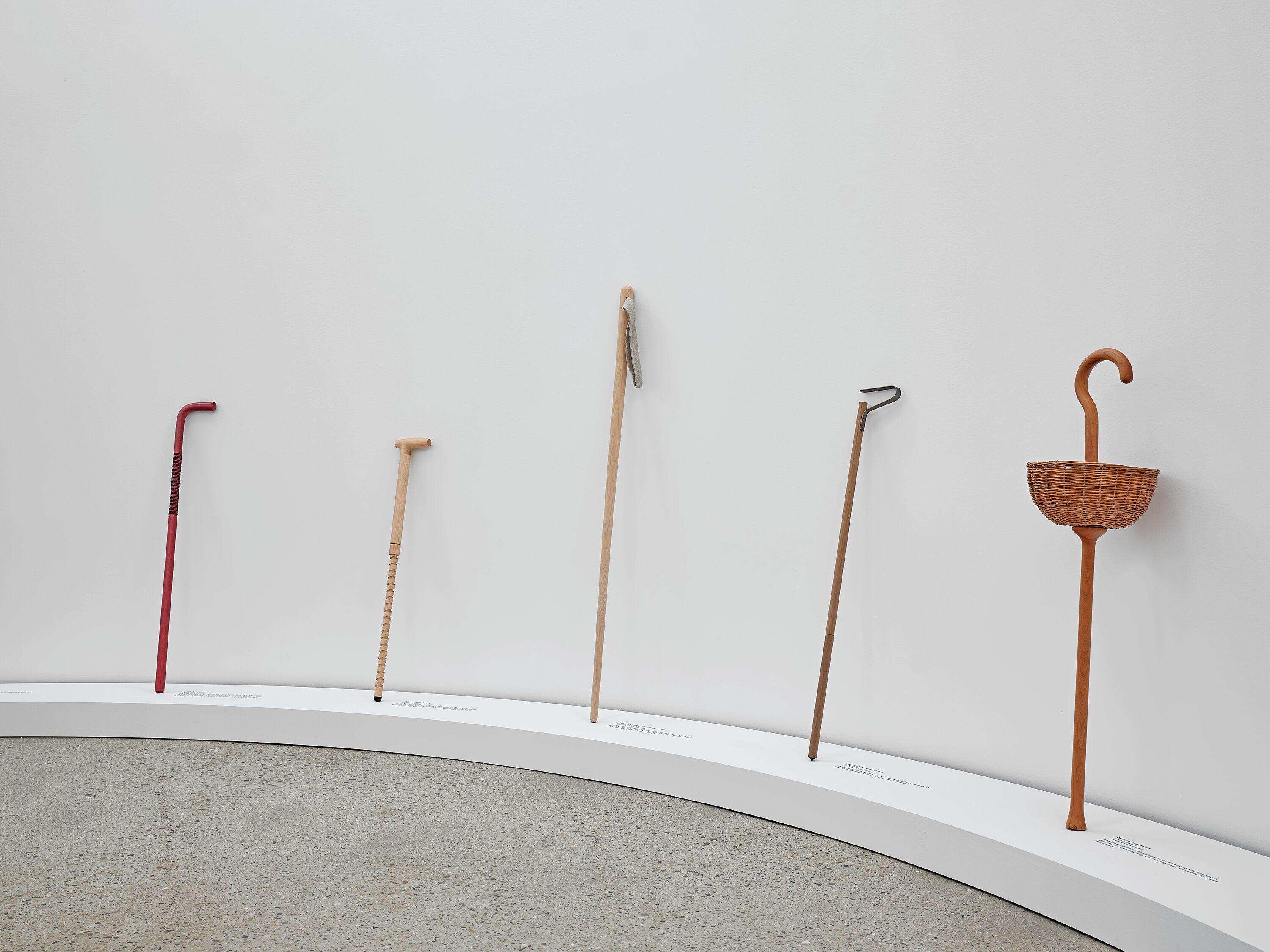 MillerKnoll's renovated flagship in New York opens doors to design experiences
MillerKnoll's renovated flagship in New York opens doors to design experiencesThe new MillerKnoll New York gallery space makes its debut with Keiji Takeuchi’s ‘Walking Sticks & Canes’ exhibition, supported by Triennale Milano
-
 An ocean-facing Montauk house is 'a coming-of-age, a celebration, a lair'
An ocean-facing Montauk house is 'a coming-of-age, a celebration, a lair'A Montauk house on Hither Hills, designed by Hampton architects Oza Sabbeth, is wrapped in timber and connects its residents with the ocean
-
 With a freshly expanded arts centre at Dartmouth College, Snøhetta brings levity to the Ivy League
With a freshly expanded arts centre at Dartmouth College, Snøhetta brings levity to the Ivy LeagueThe revamped Hopkins Center for the Arts – a prototype for the Met Opera house in New York –has unveiled its gleaming new update
-
 From Bauhaus to outhouse: Walter Gropius’ Massachusetts home seeks a design for a new public toilet
From Bauhaus to outhouse: Walter Gropius’ Massachusetts home seeks a design for a new public toiletFor years, visitors to the Gropius House had to contend with an outdoor porta loo. A new architecture competition is betting the design community is flush with solutions
-
 Robert Stone’s new desert house provokes with a radical take on site-specific architecture
Robert Stone’s new desert house provokes with a radical take on site-specific architectureA new desert house in Palm Springs, ‘Dreamer / Lil’ Dreamer’, perfectly exemplifies its architect’s sensibility and unconventional, conceptual approach
-
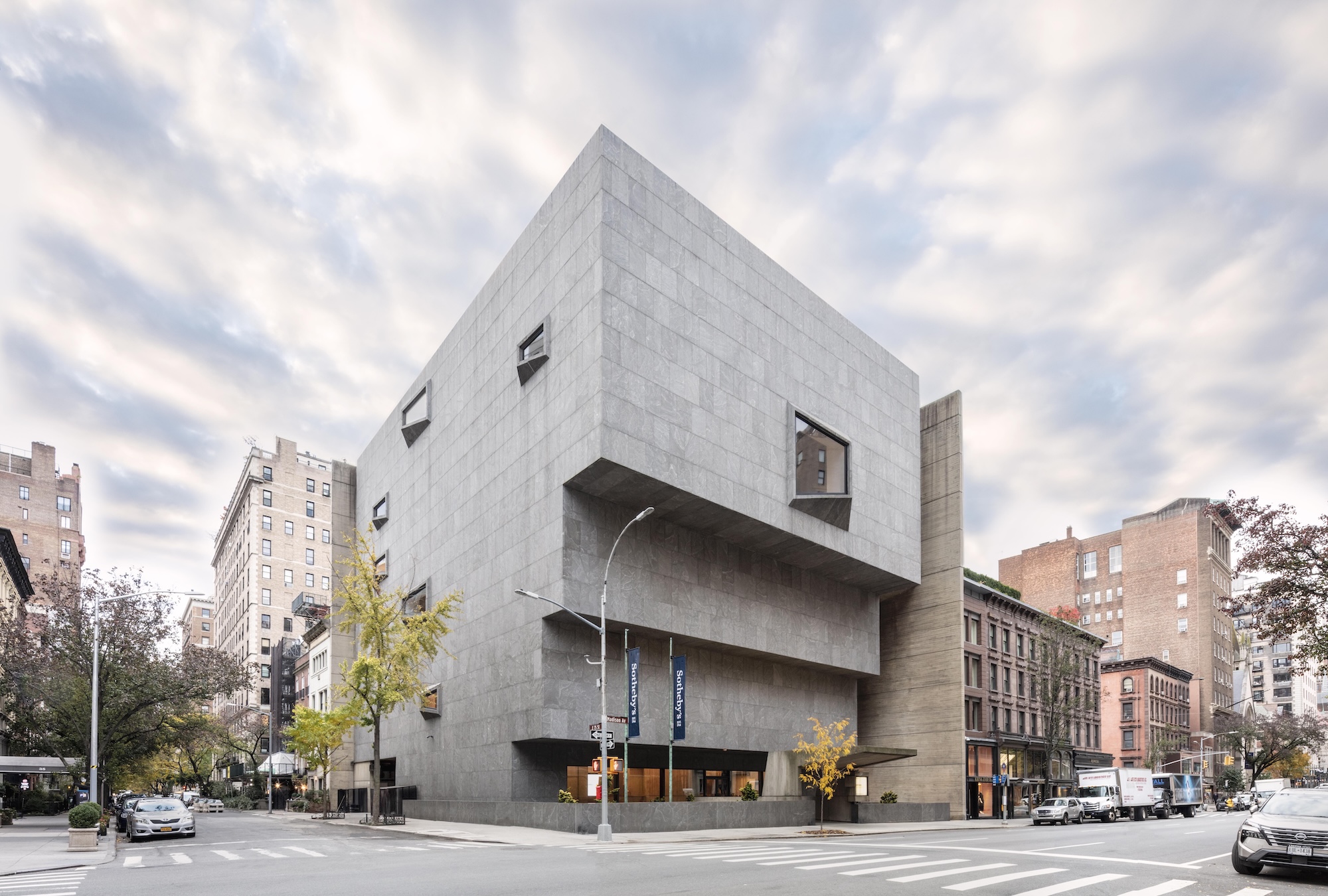 New York's iconic Breuer Building is now Sotheby's global headquarters. Here's a first look
New York's iconic Breuer Building is now Sotheby's global headquarters. Here's a first lookHerzog & de Meuron implemented a ‘light touch’ in bringing this Manhattan landmark back to life
-
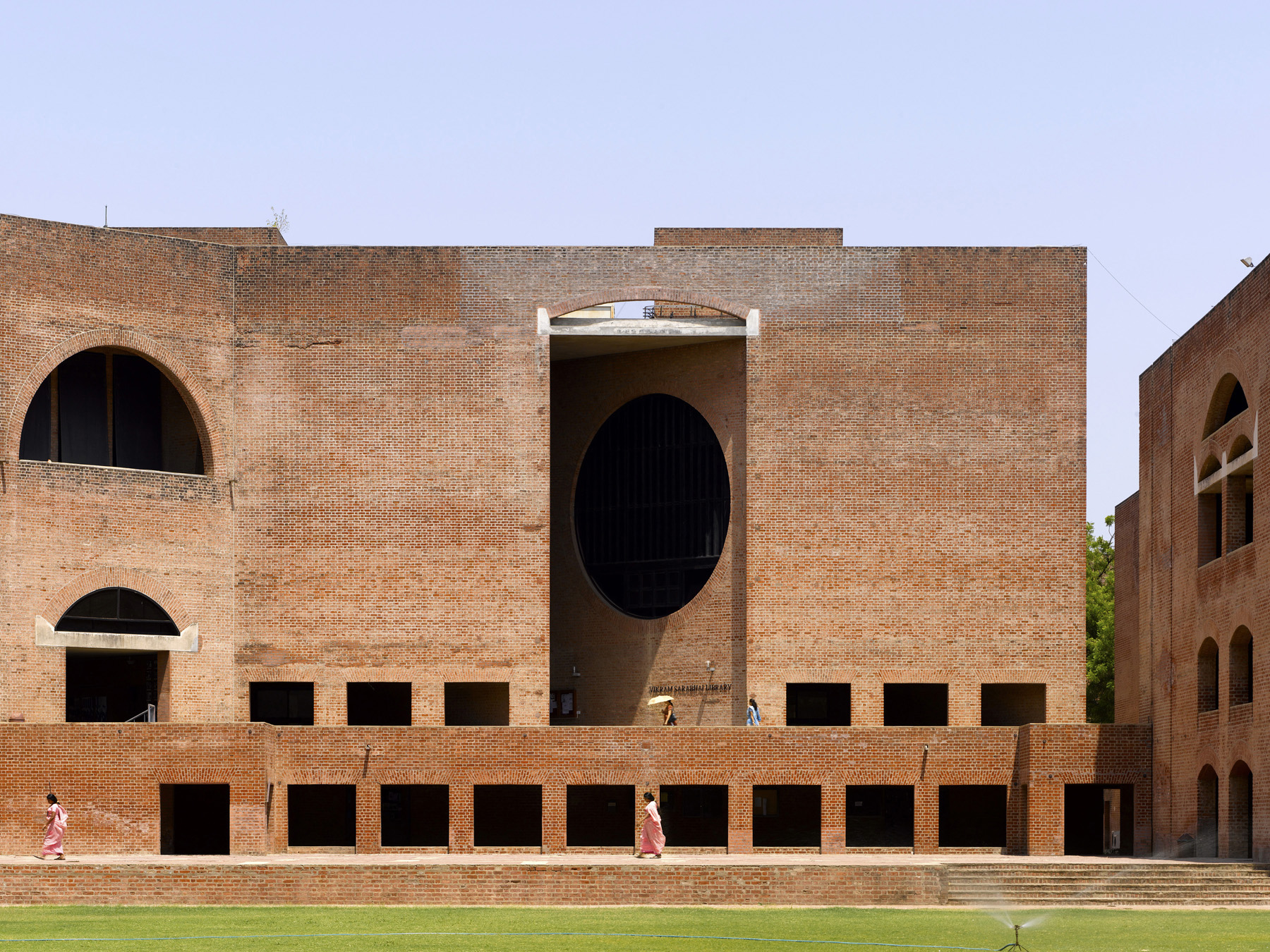 Louis Kahn, the modernist architect and the man behind the myth
Louis Kahn, the modernist architect and the man behind the mythWe chart the life and work of Louis Kahn, one of the 20th century’s most prominent modernists and a revered professional; yet his personal life meant he was also an architectural enigma
-
 The Architecture Edit: Wallpaper’s houses of the month
The Architecture Edit: Wallpaper’s houses of the monthFrom Malibu beach pads to cosy cabins blanketed in snow, Wallpaper* has featured some incredible homes this month. We profile our favourites below
-
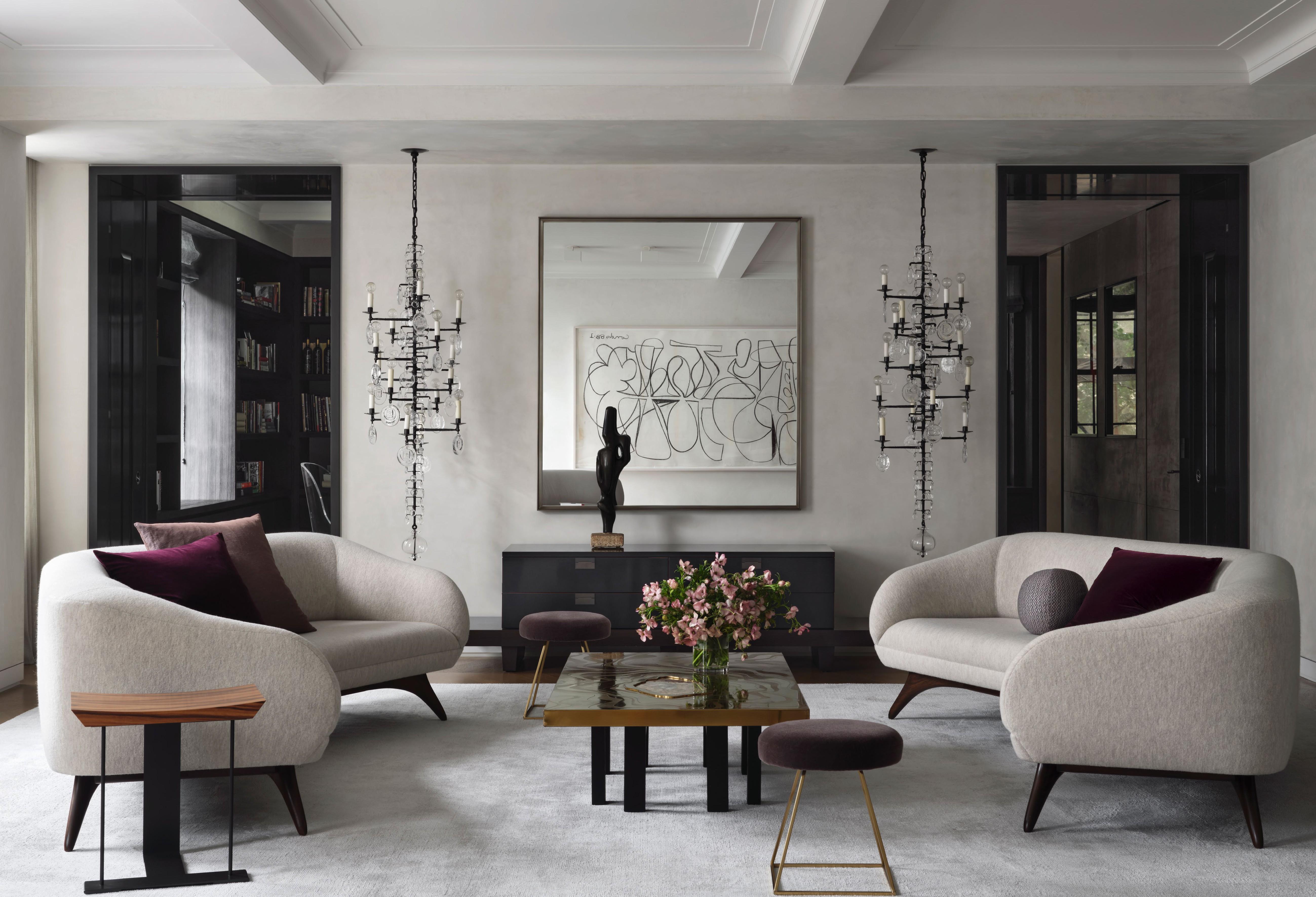 This refined Manhattan prewar strikes the perfect balance of classic and contemporary
This refined Manhattan prewar strikes the perfect balance of classic and contemporaryFor her most recent project, New York architect Victoria Blau took on the ultimate client: her family